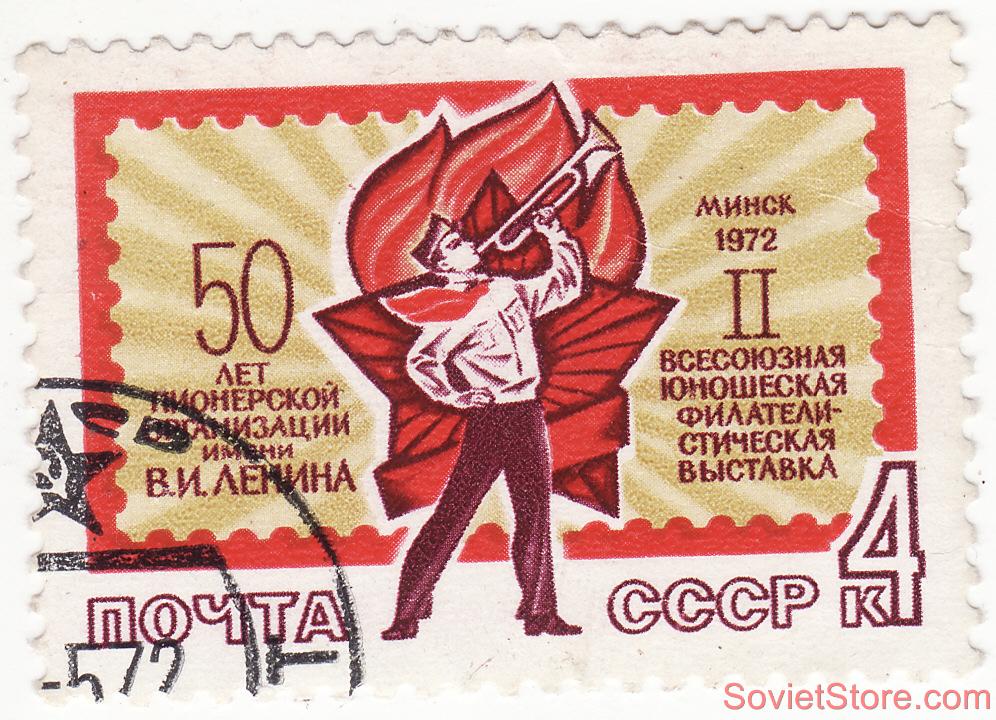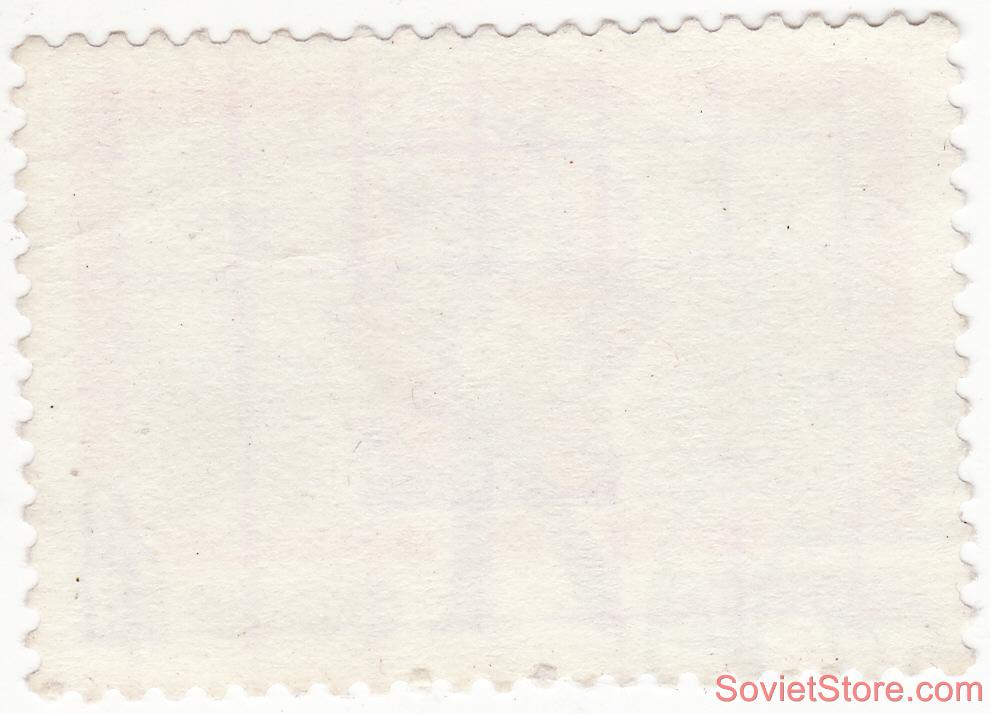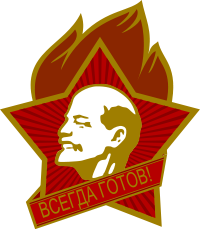SearchProduct Type
|
Add us to: Favorite Stores Item's weight: less then 1 g.
Stamp Authenticity Since 1939 till 1990 Lithuania suffered 3 occupations: 1 German (1941-1944) and 2 Soviet (1939-1941, 1944-1990), one of which lasted 46 years. In WWII occupations were based on violent battles between Germans and Russians. These historical events left a lot of stuff behind them selves. Almost every family in Lithuania has something left, related to USSR history in their forgotten drawers. So we are just traveling around lithuanian countrysides and collecting this memorabilia. Item is original, genuine, authentic, unique, not a copy or replica - has 2-12 decades of it's own unique history.
The Young Pioneer Organization of the Soviet Union, also Lenin All-Union Pioneer Organization (Russian: Всесою́зная пионе́рская организа́ция и́мени В. И. Ле́нина listen (help·info); tr.:Vsesoyuznaya pionerskaya organizatsiya imeni V. I. Lenina), was a mass youth organization of the USSR for children of age 10-15, that existed in the Soviet Union between 1922 and 1991. HistoryAfter the October Revolution of 1917, some Scouts took the Bolsheviks' side, which would later lead to the establishment of ideologically-altered Scoutlike organizations, such as ЮК (Юные Коммунисты, or young communists; pronounced as yook) and others. During the Russian Civil War from 1917 to 1921, most of the Scoutmasters and many Scouts fought in the ranks of the White Army and interventionists against the Red Army. Those Scouts who did not wish to accept the new Soviet system either left Russia for good (like Oleg Pantyukhov and others) or went underground. However, clandestine Scouting did not last long. Komsomol persistently fought with the remnants of the Scout movement. Between 1918 and 1920, the second, third, and fourth All-Russian Congresses of the Russian Union of the Communist Youth (Российский коммунистический союз молодёжи, or Rossiyski kommunisticheskiy soyuz molodyozhi) decided to eradicate the Scout movement and create an organization of the communist type, that would take Soviet youth under its umbrella.
Nadezhda Krupskaya (Vladimir Lenin's wife) was one of the chief contributors to the cause of the Pioneer movement. In 1922, she wrote an essay called Russian Union of the Communist Youth and boy-Scoutism, which fully renounced the values of the original Scout movement and advertised a communist approach to teenagers. Combined with the ideological coloring, sports, games, tourism, and surviving skills played a significant role in the upbringing of the Pioneers. On May 19, 1922 the second All-Russian Komsomol Conference decided to create pioneer units all over the country. This day is considered the birthday of the All-Union Pioneer Organization (Всесоюзная пионерская организация, or Vsesoyuznaya pionerskaya organizatsiya). By October 1922 pioneer units were united to form an organization Spartak Young Pioneers (Russian: Юные пионеры имени Спартака), which was named after V. I. Lenin by a decision of the Central Committee of Komsomol of January 21, 1924. Since March 1926 it bore the name Lenin All-Union Pioneer Organization. By the middle of 1923 it had 75 thousand members. Among other activities, Young Pioneer units, helped by Komsomol, played a great role in the eradication of illiteracy (Likbez policy) since 1923. Membership was at 161 thousand in the beginning of 1924, 2 million in 1926, 13.9 million in 1940, and 25 million in 1974. Many Young Pioneer Palaces were built, which served as community centers for the children, with rooms dedicated to various clubs, such as crafts or sports. Thousands of Young Pioneer camps were set up where children went during summer vacation and winter holidays. All of them were free of charge, sponsored by the government and Trade Unions
StructureIts main grouping of members until 1942 was the "Young Pioneer detachment," which then typically consisted of children belonging to the same secondary school. From 1942 to October 1990 (when the organization was broken up) the "detachment" was made up of children belonging to the same class within a school, while a school was referred to as a "Young Pioneer group." There was also an age-scale structure: children of 10-11 years were called Young Pioneers of the first stage; 11-12 years were Young Pioneers of the second stage; 13-15 years were Young Pioneers of the third stage. Young Pioneers of 15 years could join Komsomol, with a recommendation from their Young Pioneer group. The main governing body was the Central Soviet of the Young Pioneer organization of the Soviet Union, which worked under leadership of the main governing body of Komsomol. Its official newspaper was Pionerskaya Pravda. Main goals and requirements of membershipThe main goals and duties of Young Pioneers and requirements of membership were specified by the Regulations of the Young Pioneer organization of the Soviet Union; by the Solemn Promise (given by each Young Pioneer joining the organization); by the Rules of the Young Pioneers; and by the Young Pioneer Motto, всегда готов! (vsegda gotov, Always Prepared). There were two major revisions of them: in 1967 and 1986. Although membership was theoretically optional, almost all the children in the Soviet Union belonged to the organization; it was a natural part of growing up. Symbols, attributes, rituals and traditionsThe main symbols of Young Pioneers were the red banner, flag, Young Pioneer's red tie, the badge. Attributes: the bugle, the drum, the uniform (with badges of rank). Some of rituals were: salute, Young Pioneer parade, banner bearing, raising of the flag. Most common traditions were the Young Pioneers rally (usually round a bonfire) and festivals. SongsYoung Pioneer songs were usually sung at various Young Pioneer meetings, in Young Pioneer camps, and at schools. One of the earliest and the most popular song was the Young Pioneer March. It was written in 1922 by Aleksandr Zharov (music by Sergei Dyoshkin) and was sometimes called The Anthem of Young Pioneers. There were a great many other songs, here are some very popular ones:
AwardsThe Young Pioneers who excelled in academic study, work, sports or social activity were elected to the self-governing institutions, were sent as delegates to the Young Pioneers gatherings (including All-Union ones). The most notable were recognized in the organization's Book of Honor. During World War II, many Young Pioneers fought against Nazis in partisan detachments, which existed near their homes on the territories occupied by Nazi Germany. Nearly 30 thousand of them were awarded various orders and medals; 4 Young Pioneers became Heroes of the Soviet Union The free listing tool. List your items fast and easy and manage your active items. On Jul-07-08 at 11:45:37 PDT, seller added the following information:
| Return
Items must be returned within 30 days .
Refund will be given as Money back. Refund policy details: Return is accepted at any reason. Item(s) must arrive to us not later then 30 days after it was shipped out (you will be informed about this immediately after it will be done). Returned items must be the same item in the exact same condition as originally shipped. Refunds are for the final eBay item purchase price only, less a 10% restocking fee. Shipping costs, insurance, and handling charges (if any) are non refundable. Returns must be shipped insured. Shipping
Payment Method
Insurance
Not Offered (Domestic)
|
Shopping Cart |
||||||||||||||||||||||||||||||||||||||||||||||||






